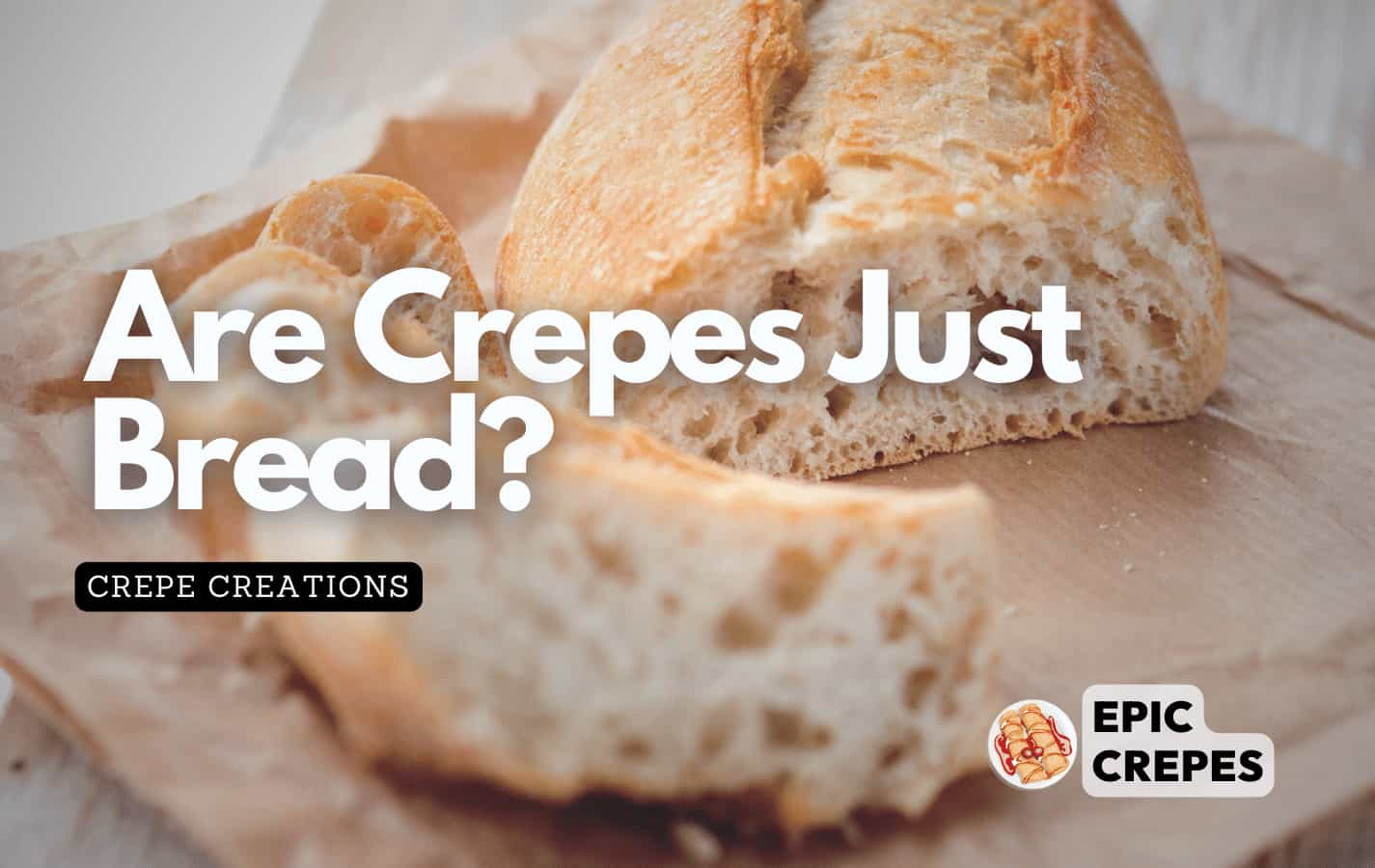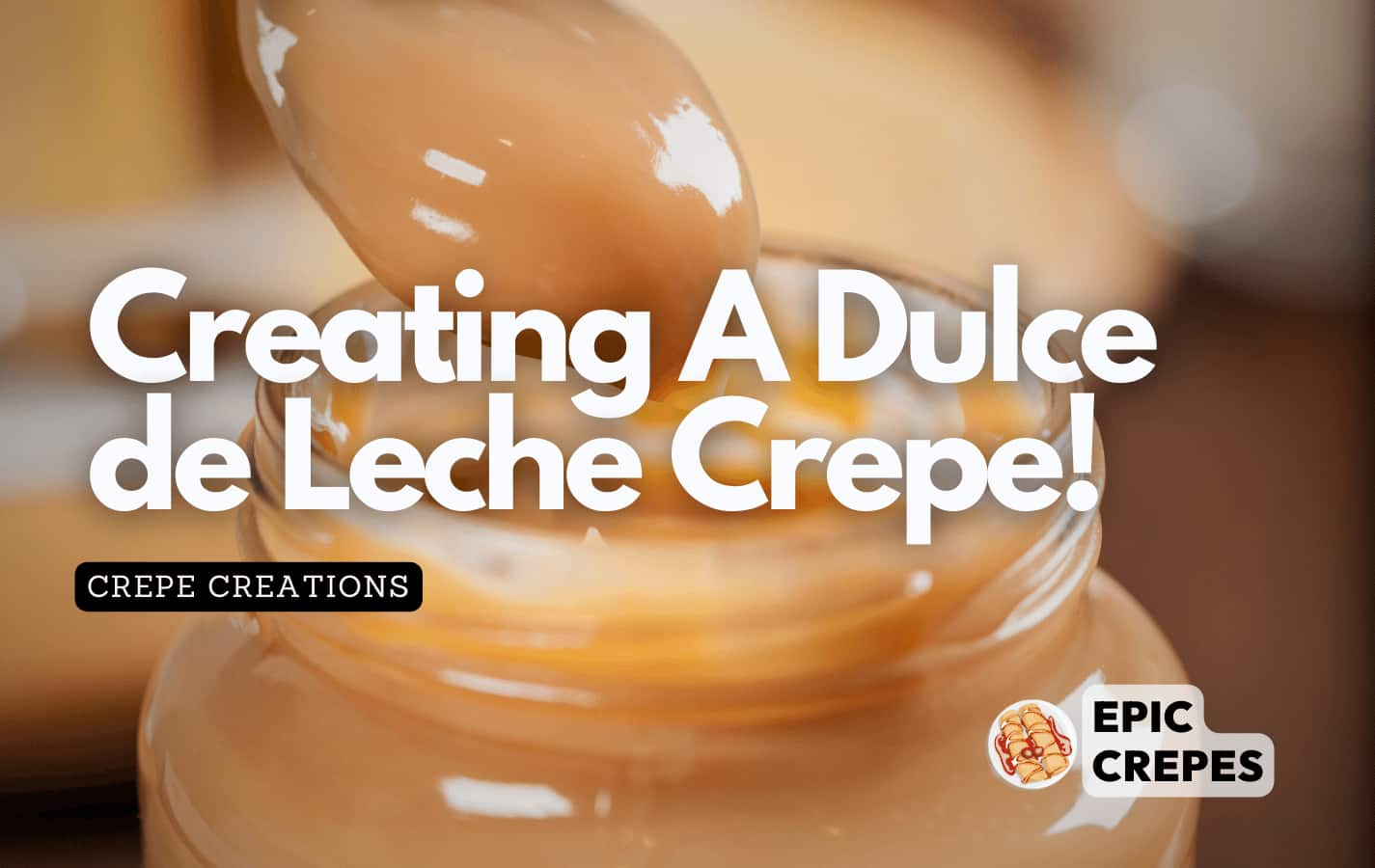If you’ve ever eaten a crepe, you may have wondered if it qualifies as bread. After all, it’s thin and flat like a tortilla or pita, but also has a soft and delicate texture like a pancake.
The answer to this question is not so straightforward, as it depends on how one defines bread and what ingredients are used to make crepes. To begin with, let’s define what we mean by bread. Bread is typically made from flour, water, yeast or another leavening agent, salt, and sometimes sugar or other additives. It comes in various shapes and sizes, from loaves to buns to bagels.
Crepes, on the other hand, are made from a batter of flour, eggs, milk or cream, and butter. They are cooked on a hot griddle or pan until they form a thin layer that can be filled with sweet or savory ingredients.
So while crepes may share some similarities with certain types of breads in terms of appearance and texture, they differ significantly in their composition and method of preparation.
Defining Bread
Bread is a staple food that has been around for centuries. Its definition varies depending on who you ask, but generally, bread refers to any baked product made from flour and water.
There are many types of bread, each with its unique flavor and texture. One of the most common types of bread is sourdough. It’s made by fermenting dough using wild yeast and bacteria found in the environment.
This process creates a tangy flavor that many people love. Other popular types of bread include white bread, whole wheat bread, rye bread, and pita.
Regardless of the type of bread, they all have one thing in common: they’re made from simple ingredients like flour, water, salt, and yeast or other leavening agents. The preparation process can vary depending on the type of bread being made. Some require multiple rises while others can be whipped up quickly in a few hours.
Crepes are often categorized as a type of bread because they’re made from flour and water; however, their preparation is quite different from traditional loaves of bread. Instead of being baked in an oven, crepes are cooked on a hot griddle or skillet. The ingredients used to make crepes also differ from those used to make most types of bread.
Ingredients And Preparation Of Crepes
I’m really excited to talk about crepes!
Let’s start by discussing the ingredients – what do you need to make them?
Then we can move on to preparation – how can we get them just right?
I’m sure with the right ingredients and preparation, we’ll have delicious crepes!
Ingredients
As you stroll down the streets of Paris, the sweet aroma of freshly made crepes wafts through the air. Crepes are a beloved French delicacy that is enjoyed all around the world.
The main ingredients for making crepes include flour, eggs, milk, and butter. However, there are different types of flour that can be used such as all-purpose flour or buckwheat flour for a nuttier flavor. All-purpose flour is commonly used when making crepes because it gives them a light and delicate texture. Buckwheat flour is also a popular choice for savory crepes because it has a heartier taste and pairs well with fillings like ham and cheese. Other flours that can be used include whole wheat flour or gluten-free alternatives.
When it comes to fillings, crepes are incredibly versatile. Sweet options include Nutella, strawberries, bananas, and whipped cream while savory variations include ham and cheese or spinach and feta. The possibilities are endless! With so many choices, crepes can be served for breakfast, lunch or dinner.
In summary, the ingredients used to make crepes vary depending on personal preference but typically consist of all-purpose flour or other types like buckwheat or gluten-free alternatives. Additionally, the filling options range from sweet to savory making them a versatile dish that can be enjoyed at any time of day.
Preparation
Now that we’ve discussed the various ingredients used in making crepes, it’s time to delve into the preparation process. Making crepes requires a bit of finesse, but with practice, anyone can master the technique.
The batter must be smooth and free of lumps to ensure that the crepes cook evenly. There are also different cooking techniques that can be used to achieve varying levels of thickness and texture.
One key factor in making delicious crepes is allowing the batter to rest before cooking. This allows the gluten in the flour to relax and results in a smoother texture. Once rested, heat a non-stick pan over medium heat and add a small amount of butter or oil.
Pour a small ladleful of batter onto the pan and swirl it around until it covers the entire surface. Cook for about 1-2 minutes on each side until lightly golden brown.
The types of fillings used in crepes are endless, but it’s important to consider how they will affect the overall texture and flavor. Sweet fillings like Nutella or fresh fruit should be added after cooking while savory options like ham and cheese can be added before folding the crepe.
With these variations in cooking techniques and filling options, there’s no limit to what you can create with this beloved French delicacy!
Differences Between Crepes And Bread
Crepes and bread are two different types of food. While they can both be used as a base for various dishes, they have distinct differences.
Crepes are thin, flat pancakes made from flour, eggs, and milk, while bread is typically made from flour, water, and yeast.
One major difference between crepes and bread is their texture. Crepes are soft and pliable with a delicate texture that melts in your mouth. Bread, on the other hand, has a firmer texture with a chewy crust. This makes them ideal for sandwiches because they hold up well when filled with meats, cheeses or vegetables.
When it comes to fillings for crepes, the options are endless. Sweet or savory, there’s something for everyone. From Nutella and strawberries to ham and cheese or spinach and feta cheese – you can get creative with what you put inside your crepe. However, not all types of bread are created equal when it comes to sandwiches. Some popular sandwich breads include sourdough bread, white bread or whole wheat bread.
As we’ve seen in this section, there are clear differences between crepes and certain types of bread used in sandwiches – from their texture to their filling options. However, despite these differences, there are also similarities between crepes and certain types of bread that cannot be ignored. Let’s explore these similarities in the next section without delay!
Similarities Between Crepes And Certain Types Of Bread
Let’s just say that crepes and bread have a lot in common. Both are made from flour, although different types of flour can be used for each. Crepes tend to use all-purpose flour or buckwheat flour, while bread can be made with wheat flour or rye flour.
Another similarity is the endless filling options that both crepes and certain types of bread offer. Crepes can be filled with sweet ingredients like Nutella, fruit, or whipped cream. They can also be filled with savory ingredients like ham and cheese or spinach and feta.
Similarly, certain types of bread such as focaccia or pita can be stuffed with meats, cheeses, vegetables, and sauces. Whether you prefer your carbs in the form of a thin, delicate crepe or a hearty slice of bread depends on your personal taste preferences.
But one thing is for sure: both offer a wide range of possibilities when it comes to flour types and filling options. So next time you’re debating between the two, why not try something new? Who knows, you might just discover a new favorite dish!
Frequently Asked Questions
What Is The Origin Of Crepes?
Crepes have a rich history that dates back to the French influence in the 12th century.
They are thin, delicate pancakes that can be enjoyed for breakfast, lunch or dinner.
Originating in Brittany, France, crepes come in various forms and flavors.
From savory to sweet, there is no shortage of crepe variations to choose from.
The French have perfected the art of making these delectable treats and they continue to be a popular dish around the world today.
Can Crepes Be Made Without Flour?
Looking for flour alternatives for your crepes?
Luckily, there are plenty of options available that can make your crepes gluten-free.
One popular option is to use buckwheat flour instead of regular wheat flour.
Another option is to use almond flour, which not only makes the crepes gluten-free but also adds a nutty flavor to them.
Chickpea flour and coconut flour are other great options that work well in crepe recipes.
With these gluten-free choices, making delicious crepes without traditional wheat flour is definitely possible!
What Are Some Common Fillings/Toppings For Crepes?
When it comes to crepes, the filling possibilities are endless. Sweet or savory, traditional or modern, there’s a crepe for every taste preference.
Some classic sweet fillings include Nutella and banana, strawberries and whipped cream, or lemon and sugar.
For savory options, popular choices include ham and cheese, spinach and feta, or mushroom and gruyere.
However, in recent years, modern twists on crepe fillings have emerged such as matcha green tea with red bean paste or chicken tikka masala.
Whether you prefer a classic flavor combination or something more unique, crepes are sure to satisfy any craving.
Are Sweet Crepes More Popular Than Savory Crepes?
Savory and sweet crepes are both incredibly popular, but it can be debated which one is more favored.
Sweet crepes tend to be the go-to option for those with a sweet tooth, while savory crepes offer a more filling and nutritious alternative.
However, it’s important to note that both options can have health benefits depending on the fillings used.
For example, sweet crepes filled with fruit can provide a dose of vitamins and antioxidants, while savory crepes filled with vegetables and protein can be a great source of fiber and energy.
Ultimately, it comes down to personal preference when choosing between the two delicious options.
How Do Crepes Differ From Pancakes?
Crepes and pancakes may look similar, but there are notable differences in texture and cooking techniques.
Crepes are thinner and have a more delicate texture compared to fluffy pancakes. To achieve this texture, crepe batter is made with less flour and more liquid, allowing it to spread thinly when cooked on a flat griddle or pan.
Pancakes, on the other hand, use a thicker batter that rises when cooked on a higher heat. Additionally, crepes are traditionally cooked at a lower temperature and flipped once while pancakes are flipped multiple times during the cooking process.
Conclusion
In conclusion, crepes are a beloved food originating from France. While traditionally made with flour, alternative recipes exist for those with dietary restrictions. Popular toppings and fillings include fruits, Nutella, cheese, and ham.
Sweet crepes tend to be more popular than savory ones, but both have their place in the culinary world. When comparing crepes to pancakes, the main difference lies in their texture and thickness. Crepes are thin and delicate while pancakes are thicker and fluffier.
Both are delicious breakfast options, but crepes offer a unique twist on classic breakfast foods. Overall, whether you prefer sweet or savory fillings, it’s safe to say that crepes are a versatile and delicious addition to any mealtime spread.




